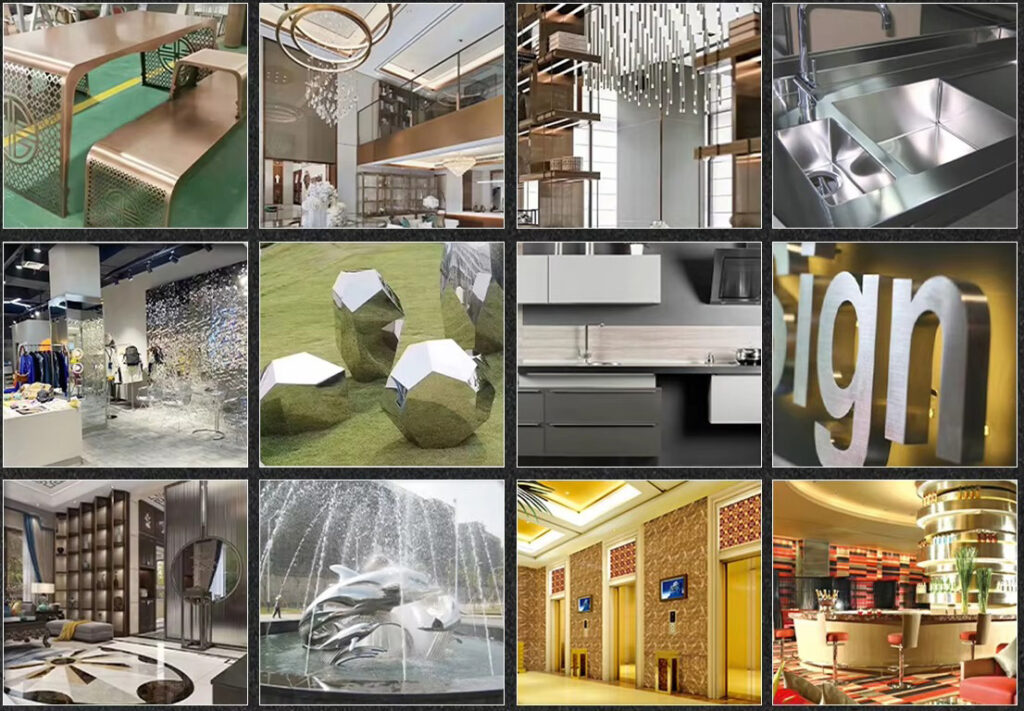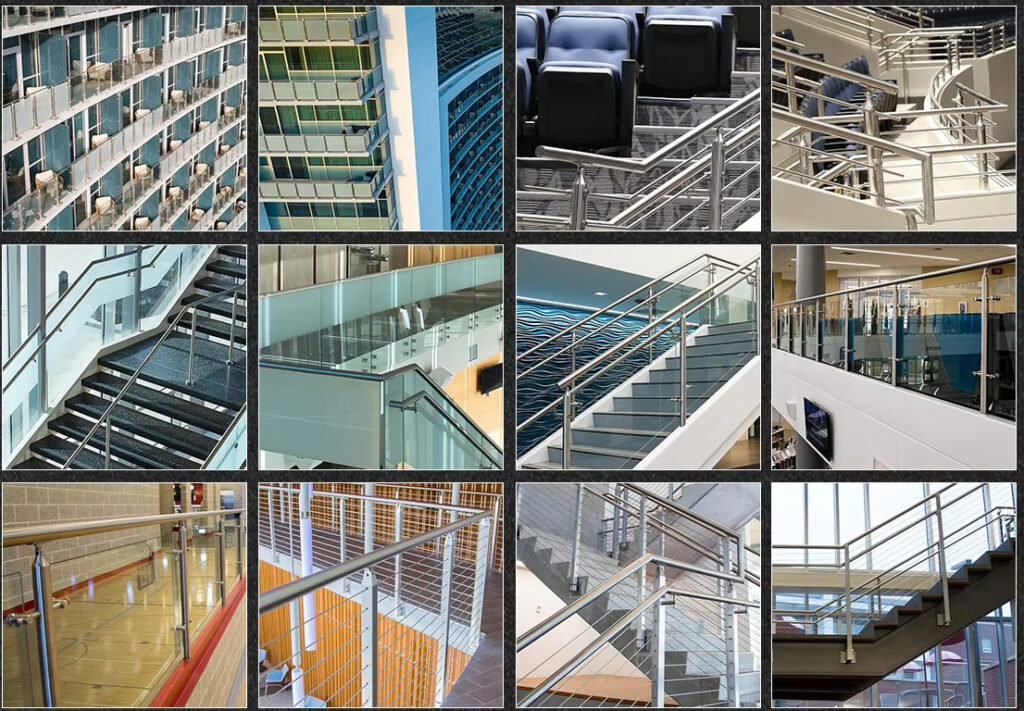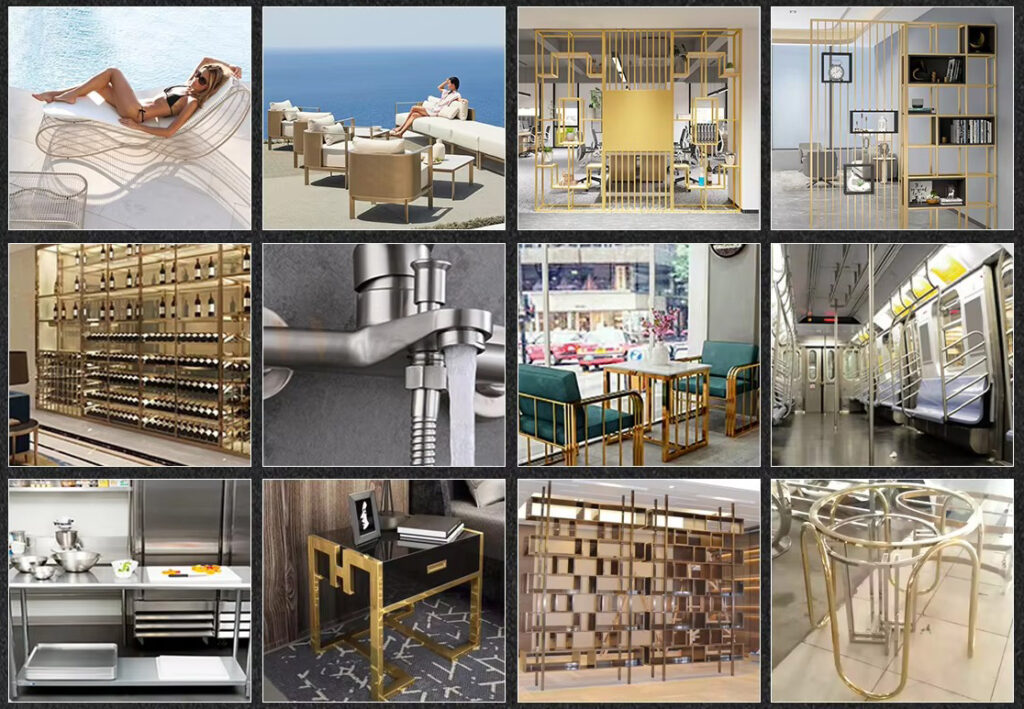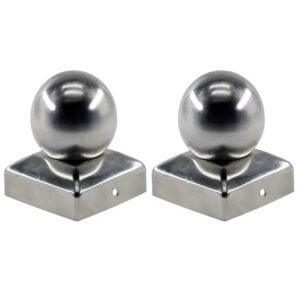
Post caps & end caps (round, square, decorative)
Post caps & end caps in 316L stainless steel. 23 years precision manufacturing for decorative applications worldwide. Request quote today.

Post caps & end caps in 316L stainless steel. 23 years precision manufacturing for decorative applications worldwide. Request quote today.
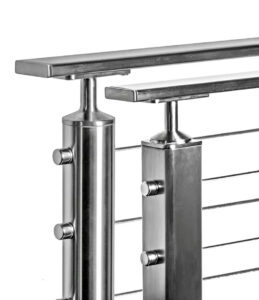
Square stainless steel posts in 304/316L grades. 23 years precision manufacturing for coastal projects worldwide. Request quote today.
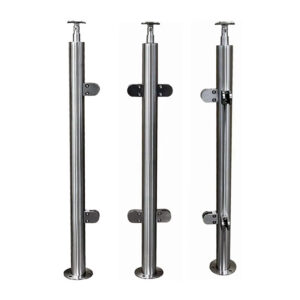
Stainless steel posts in 304/316L grades. 23+ years ODM fabrication for marine & commercial applications. Contact factory today.
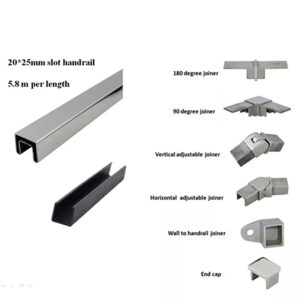
Square top rail components in 316L stainless steel. 23+ years precision manufacturing for global applications. Contact factory today.
Project-specific hardware in 316L stainless steel. 23 years delivering tailored solutions for specialized projects worldwide. Get factory quote today.
Non-standard size components in 316L stainless steel. 23+ years ODM manufacturing for unique sizing requirements globally. Contact us today.
| Specification | Our 316L Stainless Steel Systems | Standard 304 Stainless | Aluminum Systems | Galvanized Steel Systems |
|---|---|---|---|---|
| Material Grade | 316L Marine-Grade Stainless | 304 Standard Stainless | 6061-T6 Aluminum | Hot-Dip Galvanized Steel |
| Corrosion Resistance | Exceptional (25+ years coastal) | Good (15-20 years inland) | Moderate (10-15 years) | Poor (5-8 years) |
| Load Capacity | 600 lbs per spigot | 500 lbs per spigot | 400 lbs per spigot | 450 lbs per spigot |
| Glass Compatibility | 8-16mm (5/16″ to 5/8″) | 8-16mm (5/16″ to 5/8″) | 8-12mm (5/16″ to 1/2″) | 8-12mm (5/16″ to 1/2″) |
| Installation Method | Tool-free clamping system | Requires specialized tools | Mechanical fastening | Welding/bolting required |
| Temperature Range | -40°F to 800°F | -40°F to 600°F | -80°F to 400°F | -20°F to 500°F |
| Surface Finish Options | Brushed, Mirror, Satin | Brushed, Satin | Powder coated only | Zinc coating |
| Maintenance Frequency | Annual inspection only | Bi-annual inspection | Quarterly touch-ups | Monthly inspection |
| Height Options | 100-200mm (4″ to 8″) | 100-200mm (4″ to 8″) | 100-160mm (4″ to 6.3″) | 100-160mm (4″ to 6.3″) |
| Deflection Under Load | <5mm at 200lbs | <7mm at 200lbs | <12mm at 200lbs | <10mm at 200lbs |
| UV Resistance | Permanent stability | Permanent stability | Coating degradation | Coating failure |
Advanced Molybdenum-Enhanced Corrosion Protection
Our 316L stainless steel spigots and standoffs contain 2-3% molybdenum, providing exceptional resistance to chloride attack and pitting corrosion. In saltwater environments where standard 304 stainless steel components fail within 8-10 years and aluminum systems succumb to galvanic corrosion, our marine-grade hardware maintains structural integrity for 25+ years. This superiority eliminates the frequent replacement costs associated with inferior materials.
Tool-Free Glass Clamping Technology
Our proprietary clamping mechanisms eliminate the need for specialized installation tools and reduce installation time by 30% compared to traditional mechanical systems. While aluminum hardware often requires complex fastening and galvanized components need welding operations, our spring-loaded clamps secure glass panels through simple hand pressure with infinite adjustability for perfect alignment.
Superior Structural Performance
Our spigots deliver 600-pound load capacity per unit, exceeding building code requirements by 200% while maintaining minimal deflection under load. Unlike aluminum systems that experience significant flex and galvanized alternatives prone to stress corrosion, our 316L construction provides rigid support that prevents glass panel movement and maintains safety compliance throughout decades of service.
Aesthetic Versatility with Functional Excellence
Our spigots create completely frameless glass installations with unobstructed views, while standoffs provide side-mounting solutions for space-constrained applications. The brushed, mirror, and satin finish options complement any architectural style while the non-porous surface resists fingerprints and environmental staining that plague painted aluminum systems.
Integrated Glass Protection Features
Our hardware incorporates built-in glass edge protection and moisture sealing capabilities that prevent stress concentration and water infiltration. The radiused contact surfaces distribute loads evenly across glass panels, preventing the chip and crack issues common with angular aluminum fittings and poorly designed galvanized brackets.
Luxury Oceanfront Pool Decks
Perfect for infinity pools and waterfront terraces where continuous saltwater exposure demands marine-grade hardware. Our 316L spigots withstand salt spray and storm conditions while maintaining crystal-clear sight lines essential for oceanfront properties. Ideal for installations requiring 42-inch height compliance with minimal visual obstruction.
High-Rise Commercial Balconies
Engineered for urban commercial buildings with wind loads exceeding 150 mph and seismic requirements. Our standoff systems accommodate building movement while providing the 200-pound concentrated load capacity required by IBC standards. Suitable for hotels, office towers, and residential high-rises with glass curtain wall integration.
Resort Marina Walkways and Boardwalks
Designed for hospitality environments with continuous saltwater immersion and high foot traffic. Our spigots resist corrosion from marine organisms and cleaning chemicals while providing safety barriers that meet health department regulations. Perfect for yacht clubs, waterfront restaurants, and luxury marina facilities.
Contemporary Residential Staircase Guards
Specifically developed for modern homes with open-concept designs requiring glass railings on floating staircases and mezzanine levels. Our hardware enables seamless transitions between levels while maintaining child safety compliance through proper glass spacing and structural integrity.
Corporate Atrium and Lobby Systems
Built for commercial interior spaces requiring sophisticated aesthetics with OSHA compliance. Our systems integrate with architectural elements while providing the durability necessary for high-traffic corporate environments and public buildings with multiple daily users.
Rooftop Terrace Wind Barriers
Formulated for elevated installations requiring wind load resistance and weather protection. Our spigots create effective wind barriers while maintaining the panoramic views essential for rooftop dining, entertainment areas, and penthouse terraces in urban environments.
What’s the difference between glass spigots and standoffs for railing applications?
Spigots are vertical posts that mount to the floor or deck surface and support glass panels from below, creating a completely frameless appearance. Standoffs mount horizontally to the side of structures and clamp glass panels at specific points, creating a “floating” effect. Spigots are easier to install and more cost-effective, while standoffs provide maximum space efficiency but require precise alignment and structural reinforcement.
Why should I choose 316L over 304 stainless steel for glass spigots?
316L contains molybdenum that dramatically improves chloride resistance, extending service life to 25+ years in coastal environments where 304 stainless steel begins corroding within 3-5 years. For glass railing applications, this longevity advantage justifies the cost premium since spigots are integral to structural safety and expensive to replace once glass panels are installed.
What glass thickness can your spigots accommodate?
Our spigots accommodate glass thicknesses from 8-16mm (5/16″ to 5/8″), including standard tempered and laminated safety glass. Thicker glass provides greater structural strength for guardrail applications, while thinner glass works for decorative wind barriers. Our adjustable clamping systems ensure proper fit across this entire range without custom modifications.
How do spigots compare to traditional post-and-rail systems in terms of cost?
While initial hardware costs are higher, spigots eliminate the need for top rails, intermediate posts, and complex framing, often resulting in lower total system costs. Installation time reductions of 30% further decrease labor expenses. Long-term maintenance savings from corrosion-resistant 316L construction provide superior value compared to painted or coated alternatives requiring periodic refinishing.
What building codes apply to glass spigot railing systems?
Glass spigot systems must meet IBC Section 1013 requirements for guards, including 200-pound concentrated load capacity and 42-inch minimum height for commercial applications. Residential installations follow IRC Section R312 with 36-inch minimum height requirements. Our spigots exceed these load requirements and integrate with tempered glass specifications to ensure complete code compliance.
Can spigots be installed on different substrate materials?
Our spigots accommodate concrete, steel, wood, and composite deck surfaces through appropriate anchoring systems. Concrete installations use expansion anchors, steel substrates utilize through-bolts, and wood applications employ lag screws with backing plates. Each substrate requires specific fastener types and embedment depths to achieve required load ratings.
How often do glass spigot systems require maintenance?
Our 316L spigots require only annual inspection and cleaning with mild soap and water. Unlike aluminum systems needing quarterly coating touch-ups or galvanized hardware requiring monthly corrosion monitoring, our stainless steel construction maintains performance and appearance with minimal intervention, reducing lifecycle maintenance costs by 60%.
What’s the maximum spacing between spigots for code compliance?
Spigot spacing depends on glass thickness and height requirements, typically ranging from 4-6 feet between supports for standard applications. Building codes require glass panels to resist 50-pound per linear foot distributed loads, which determines maximum spacing. Our engineering support helps calculate optimal spacing for specific wind loads and structural requirements.
Material Standards Compliance
Our glass spigots meet ASTM A240 specifications for 316L stainless steel chemical composition, ensuring consistent molybdenum content for superior corrosion resistance. All components comply with ASTM A554 standards for welded stainless steel mechanical tubing and ASTM A493 requirements for stainless steel hardware fittings. Certified mill test reports document chemical analysis and mechanical properties for quality verification.
Building Code Adherence
Systems comply with International Building Code (IBC) Section 1013 requirements for guards and International Residential Code (IRC) Section R312 for residential applications. Load testing confirms 200-pound concentrated load capacity and 50-pound per linear foot distributed load resistance. Glass integration meets ASTM C1048 specifications for heat-strengthened and tempered safety glass applications.
Structural Performance Testing
Each spigot design undergoes destructive testing to 1,800-pound minimum breaking strength, exceeding code requirements by 900%. Dynamic load testing simulates wind and seismic conditions per ASCE 7 standards. Fatigue testing validates 2 million load cycles at working loads to verify long-term reliability under environmental stresses and building movement.
Installation Standards Integration
Anchor bolt specifications follow ICC-ES evaluation reports for post-installed fasteners in concrete and masonry. Wood substrate connections comply with AWC National Design Specification requirements for lag screw and through-bolt applications. Steel attachment methods follow AWS D1.1 structural welding codes for proper load transfer and connection integrity.
Quality Management Certification
Manufacturing processes follow ISO 9001:2015 quality standards with documented material traceability from mill to finished product. All welding operations meet AWS D18.1 stainless steel fabrication requirements with certified welding personnel. Surface finish standards conform to ASTM A480 specifications for architectural stainless steel applications and corrosion resistance.
Environmental Performance Standards
316L material composition provides Category 5 corrosion resistance per ASTM B117 salt spray testing, validating 25-year service life in marine environments. UV stability testing confirms no degradation under ASTM G154 accelerated weathering protocols. Thermal cycling tests verify dimensional stability and clamping force retention across operating temperature ranges from -40°F to 800°F.
